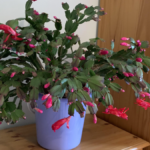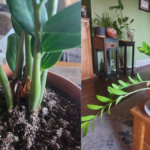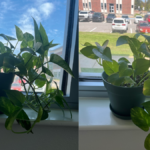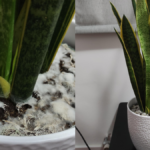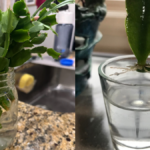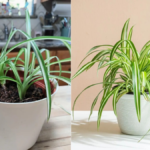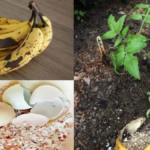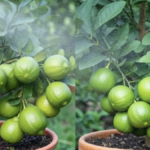How to Take Care of a Bonsai Tree – this is easy if you follow the right steps. In this guide, you will learn how to grow a healthy Bonsai tree indoors or outdoors. We will cover all the important things like watering, sunlight, soil, humidity, fertilizer, and how to grow Bonsai new plants. These simple tips will help your Bonsai tree stay green, strong, and beautiful.
I’ve been into gardening for years now, and growing Bonsai trees has become one of my favorite parts of it. They’re not just plants—they’re peaceful little works of art that teach patience and care. Here’s everything I’ve learned, shared in a way that’s beginner-friendly and based on real experience.
IN THIS ARTICLE
Quick tips – How to Take Care of a Bonsai Tree
- Water only when the topsoil feels dry—not daily by default
- Make sure your Bonsai gets proper light (natural or grow lights)
- Use well-draining soil, not regular garden mud
- Keep humidity in check, especially indoors
- Feed with balanced fertilizer during growing months
- Trim new growth regularly to keep the shape
- Watch out for signs of pests or stress

How often to water Bonsai Tree – Not Too Much, Not Too Little
Watering is probably the trickiest part of Bonsai care, but once you get a feel for it, it becomes second nature.
- Check the top layer of soil—if it feels dry, it’s time to water
- Use a watering can with a soft spout so you don’t disturb the roots
- Always make sure excess water drains out—no standing water!
- In summer, you may need to check moisture levels daily
- Every Bonsai species is different, so observe how yours reacts
Bonsais don’t like being too wet or too dry—it’s about balance.
Best Soil for Bonsai Tree – The Right Foundation
The right soil makes a world of difference in how your Bonsai grows.
- Choose well-draining Bonsai mix, not regular potting soil
- Good mix: akadama + pumice + lava rock (or buy ready-made)
- Add perlite or coarse sand for extra drainage
- Repot every couple of years to refresh the soil and trim roots
- Never let the roots sit soggy—Bonsai roots need to breathe
Sunlight for Bonsai Tree – Bright, But Not Harsh
Sunlight is food for your Bonsai. Give it the light it needs, and it’ll reward you with beautiful growth.
- Outdoor Bonsais: Need 4–6 hours of direct sunlight
- Indoor Bonsais: Place near a bright window (south or east-facing is best)
- Rotate the pot every few days so all sides get even light
- In extreme summer heat, give some afternoon shade
- If light is low, try using a grow light to support it
Light-starved Bonsais tend to grow weak and drop leaves—avoid that!
Humidity and Temperature – Create the Right Environment
Indoor air can get quite dry, especially with fans or AC running—and your Bonsai will feel it.
- Keep humidity moderate to high
- Mist the leaves lightly in the morning during hot or dry days
- Use a humidity tray filled with pebbles and water under the pot
- Best temperature range: 15°C to 30°C
- Avoid placing your Bonsai near heat vents or cold drafts
A little extra care with humidity goes a long way in Bonsai health.
Fertilizer for Bonsai Tree – Feed It the Right Way
Because Bonsais grow in small pots, they need regular feeding to stay strong.
- Use a balanced liquid fertilizer (like NPK 10-10-10)
- During spring and summer: feed every 2 weeks
- In winter: once a month or stop if your Bonsai is dormant
- Water before you fertilize—never feed dry soil
- Organic slow-release fertilizers are great too
A well-fed Bonsai grows healthier leaves, stronger branches, and better roots.
Propagate Bonsai Tree – Growing Your Own Mini Forest
Want more Bonsais? Good news—propagating them is easier than you think.
- Stem cuttings: Most common method; take from healthy branches
- Use rooting hormone for quicker root development
- Keep in moist soil and place in indirect light
- Air layering works great for woody types like maple or fig
- Growing from seeds is possible but takes time and patience
It’s rewarding to see new Bonsai life sprout from your own hands.
Common Bonsai Problems and Their Solutions
Stay observant—Bonsai plants show signs when they’re stressed. A little attention prevents big issues.
| Problem | What’s Happening | How to Fix It |
|---|---|---|
| Yellowing leaves | Too much water, low light | Reduce watering, move to brighter area |
| Falling leaves | Sudden temperature changes | Keep temperature stable, avoid AC blasts |
| Mold on soil | Poor drainage or airflow | Improve drainage, repot if needed |
| Pests like aphids | Dry air or weak plant | Spray neem oil or mild insecticide |
| Slow or no growth | Poor soil or lack of nutrients | Refresh soil, start regular fertilizing |
Bonsai Tree Plant Care FAQ
Can I keep a Bonsai tree indoors?
Yes, many Bonsai varieties like Ficus, Jade, and Chinese Elm are great for indoors. Just make sure they get bright, indirect sunlight and enough humidity.
Why are my Bonsai leaves turning yellow?
Yellow leaves usually mean overwatering or lack of sunlight. Check the soil moisture and light conditions. Adjust your watering and move the plant to a brighter spot if needed.
How often should I water my Bonsai tree?
You should water your Bonsai tree only when the top 1 inch of soil feels dry. Overwatering is a common mistake. During summer, you might need to water more often, while in winter, watering frequency decreases.
Conclusion – Mastering the Art of Bonsai Tree Care
Caring for a Bonsai tree plant indoors and outdoors is a calm and rewarding experience. With the right approach to watering, sunlight, soil, humidity, fertilizer, and propagation, anyone can grow a strong and beautiful Bonsai. Whether it’s on your balcony, desk, or garden—your Bonsai will flourish with your love and care.
Read more Post
Peace Lily Care Guide: My Experience with Drooping Leaves, Brown Tips & Blooming Issues
How to Take Care of an Aloe Vera Plant (From My Years of Experience in Gardening & Farming)

